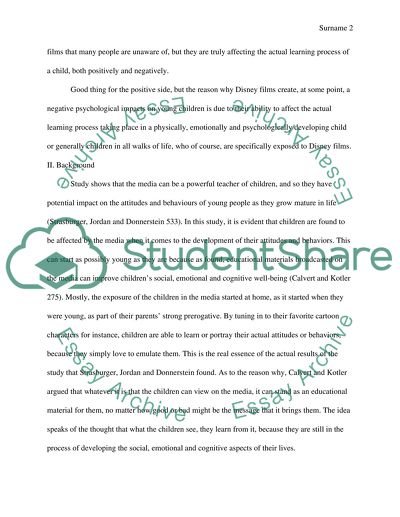Cite this document
(“The psychological impact of disney animated films on young children Research Paper”, n.d.)
Retrieved from https://studentshare.org/english/1639531-the-psychological-impact-of-disney-animated-films-on-young-children
Retrieved from https://studentshare.org/english/1639531-the-psychological-impact-of-disney-animated-films-on-young-children
(The Psychological Impact of Disney Animated Films on Young Children Research Paper)
https://studentshare.org/english/1639531-the-psychological-impact-of-disney-animated-films-on-young-children.
https://studentshare.org/english/1639531-the-psychological-impact-of-disney-animated-films-on-young-children.
“The Psychological Impact of Disney Animated Films on Young Children Research Paper”, n.d. https://studentshare.org/english/1639531-the-psychological-impact-of-disney-animated-films-on-young-children.


